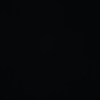
Twenty years ago, as a young teenager struggling to come to terms with my bisexuality, I sometimes wondered if I was the only bisexual person in the world.
I knew rationally that that couldn't be true, but I never met any openly bisexual people, and never saw any bisexual people on TV. At that time, bisexual internet resources were limited too.
When I read about the occasional rock star who enjoyed sex with men and women, it seemed like bisexuality was the sole preserve of the flamboyant and famous. Being bisexual didn't seem like a viable option for me.
Twenty years later, bisexual people still face multiple challenges, but some things have gotten better.
It's now easy to find online bisexual communities, blogs, information and activist sites. Bisexual YouTube vloggers are creating new spaces to express their experience and interact with thousands of viewers. There are thriving bisexual meet-up groups in cities around the world.
Bisexuality is more visible in the wider culture, too. Desiree Akhavan's 2015 movie Appropriate Behavior featured the first realistic and sensitive portrayal of a bisexual character that I've ever seen. Even deeply flawed portrayals of bisexual people in shows like House of Cards and Orange is the New Black, represent progress of a sort in their depictions of behaviorally bisexual characters, albeit ones who don't identify as bi.
Earlier this year, major news outlets published a range of articles on bisexuality, after YouGov polls showed that large numbers of young people consider themselves not '100 percent heterosexual.'
A recent BBC documentary featured young bisexual people talking about their lives and the difficulties they face. There were no shows like this when I was younger.
This greater presence of bisexual issues in popular culture and media, while not always ideal in its representation of bisexual experience, is a sign of positive change.
Sadly, we're still a long way from where we need to be. The challenges we face as bisexual people overshadow any gains that have been made over recent years. Western culture is still largely uncomfortable with bisexuality. Stigma and negative beliefs about bisexuals remain common, even within the LGBT community.
With this in mind, it's not surprising that bisexuals have poorer mental and physical health than gay or straight people, and are more likely to be unemployed and living in poverty. Less than a third of bisexuals have come out to the important people in their lives, compared to around three-quarters of gay men and lesbians. To avoid discrimination many bisexual people choose to identify as gay or straight.
It's important to focus on the challenges facing our community and to work to resolve them. But I'm optimistic that change will happen given the positive cultural shift that seems to be taking place.
Veteran LGBT activist Peter Tatchell has argued that as society becomes more accepting of the LGBT community, more and more people will be open to both opposite sex and same sex desire. This year's YouGov polls indicate that a real shift in social attitudes towards bisexuality is already underway.
In a UK poll 49 percent of 18-24 year olds said they were capable of sexual attraction to both men and women. A similar US poll found 31 percent of Americans under 30 were also bisexual in their attractions. In both polls, the older someone was, the less likely they were to say they were attracted to both men and women. It's clear then that younger people are becoming more and more comfortable to express bisexual desire.
This suggests a healthy change in the cultural climate. Young adults are more willing to engage with and admit to bisexual orientation than ever before.
At the moment, up to 5 percent of the population identify as bisexual. With a third to a half of young adults now willing to say they are capable of bisexual attraction, we could see many more people identifying as bisexual in the years to come, as stigma and discrimination diminish.
Let's hold on to that positive thought as we head into the New Year. Things are getting better for bisexual people. Maybe not as quickly as we'd like, but we're heading in the right direction.
Neil Endicott is a bisexuality coach and author of 'How to be a Happy Bisexual: A Guide to Self-Acceptance and Wellbeing.' He blogs on bisexuality and wellbeing at happybisexual.com Follow Neil on Twitter.
